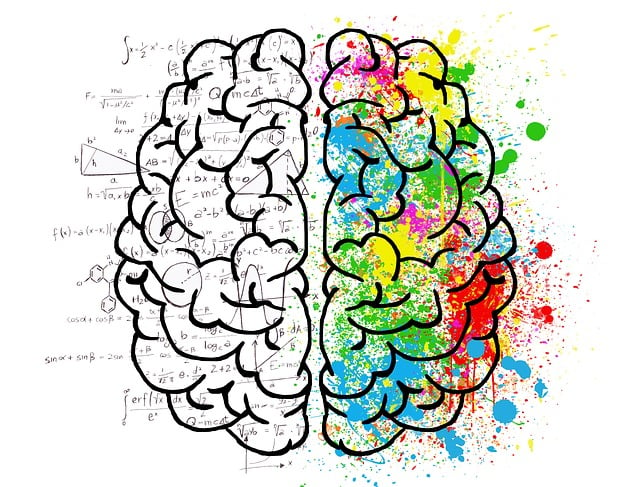Mean
In the realm of statistics, the “mean” holds a prominent place as a fundamental measure of central tendency. It is widely used to describe a set of data by providing a single representative value around which the data points tend to cluster. The mean is a crucial concept that enables statisticians, researchers, and analysts to summarize and interpret data effectively.
Definition: The mean, often referred to as the arithmetic mean or average, is computed by adding up all the values in a dataset and then dividing the sum by the total number of values. Mathematically, the formula for calculating the mean of a dataset with “n” values is:
Mean = (Sum of all values) / n
Different Types of Mean:
- Arithmetic Mean: This is the most common type of mean and is computed as described above.
- Weighted Mean: In cases where each value in the dataset carries a different weight or importance, the weighted mean is used. It gives more weight to certain values, affecting the final mean.
- Geometric Mean: This mean is used to handle situations where values grow or change multiplicatively. It is particularly useful in financial calculations and growth rates.
- Harmonic Mean: The harmonic mean is used to average rates or ratios. It is calculated by taking the reciprocal of the arithmetic mean of the reciprocals of the values.
Applications of Mean: The mean finds extensive application across various fields, including:
- Economics and Finance: It’s used to calculate average prices, wages, interest rates, and investment returns.
- Science and Engineering: Scientists use it to analyze experimental results and quantify phenomena.
- Education: Teachers use it to understand the performance of students in exams.
- Market Research: Businesses use it to analyze customer preferences and market trends.
- Medicine: Mean values of medical measurements are crucial for diagnosis and treatment.
Drawbacks of Mean: While the mean is a valuable statistical measure, it does have limitations:
- Sensitive to Outliers: Outliers, or extreme values, can heavily influence the mean, leading to an inaccurate representation of the data’s central tendency.
- Not Ideal for Skewed Distributions: In skewed distributions, where data is concentrated on one end, the mean might not accurately represent the center of the data.
- Affected by Sample Size: Smaller sample sizes can lead to more variability in the mean, making it less reliable.
- Limited for Non-Numeric Data: The mean can’t be calculated for non-numeric data, such as categorical variables.
In conclusion, the mean is a versatile statistical concept used to summarize data and provide insights into its central tendency. Its different types cater to various scenarios, while its applications span across numerous disciplines. However, analysts must be cautious of its drawbacks, especially when dealing with outliers, skewed distributions, and non-numeric data.
Median
In the realm of statistics, the median serves as a pivotal measure that offers insight into the central tendency of a dataset. It occupies a crucial place alongside the mean and mode, contributing to a comprehensive understanding of data distribution and variability. The median showcases an exceptional characteristic – it is robust against outliers and extreme values, making it an invaluable tool for exploring datasets with diverse characteristics.
Definition: The median can be defined as the middle value in a dataset when the data is arranged in ascending or descending order. In other words, it is the value that separates the data into two halves, with 50% of the data lying below and 50% lying above it. To find the median, one must first arrange the data points in order and then identify the value at the midpoint.
Different Types: There are a few variations of the median that are used in specialized cases:
- Simple Median: This is the standard median described above, suitable for continuous and discrete data.
- Grouped Median: Used when data is grouped into intervals. It involves calculating the median within each interval and then estimating the overall median based on these interval medians.
- Weighted Median: When each data point has a certain weight, the weighted median takes into account these weights when determining the central value.
Applications: The median has diverse applications across various fields:
- Skewed Data: Unlike the mean, which can be influenced by outliers, the median is resistant to extreme values, making it suitable for skewed datasets.
- Income Distribution: The median income is often used as a better representation of the “typical” income level in a population, as it is less affected by high-income outliers.
- Data with Outliers: When dealing with datasets containing outliers or irregularities, the median provides a better understanding of the central tendency.
- Ordinal Data: In cases where data can be ranked but not quantified precisely, like survey ratings, the median is an appropriate measure.
Drawbacks: While the median possesses several advantages, it also has limitations:
- Not as Informative as Mean: In some cases, the median might not fully capture the distribution’s characteristics, as it only focuses on the central value.
- Affected by Sample Size: For small sample sizes, the median might not accurately represent the overall population.
- Doesn’t Utilize All Data: The median only considers the value at the midpoint and ignores the rest of the data, potentially leading to information loss.
- Complex Calculations for Grouped Data: In cases of grouped data, calculating the median involves extra steps and can be more intricate.
In conclusion, the median is a fundamental statistical measure with versatile applications. Its robustness against outliers and skewness makes it indispensable in scenarios where the mean might fail to provide accurate insights. Despite its limitations, the median continues to be a cornerstone of statistical analysis, aiding researchers and analysts in unraveling the mysteries hidden within datasets.
Mode
In statistics, the “mode” refers to a fundamental concept that characterizes the central tendency of a dataset. It is one of the key measures used to describe the distribution of values in a dataset, providing insights into the most frequently occurring value or values. The mode serves as a complement to other central tendency measures like the mean and median, offering a comprehensive understanding of the data’s underlying characteristics.
Definition: The mode is defined as the value that appears most frequently in a dataset. In other words, it is the observation that occurs with the highest frequency. Unlike the mean, which considers all values, or the median, which identifies the middle value, the mode focuses solely on the occurrence frequency of values.
Types of Modes:
- Unimodal: A dataset is unimodal if it has a single mode, meaning one value occurs more frequently than any other value.
- Bimodal: A bimodal dataset has two modes, indicating that two distinct values are more frequent than the other values.
- Multimodal: A multimodal distribution contains more than two modes, suggesting that several values occur with the highest frequency.
- No Mode: A dataset is said to have no mode when all values occur with equal frequency, resulting in no clear peak in the distribution.
Applications: The mode finds its application in various fields, including:
- Education: Analyzing test scores to identify the most common score, which can help educators adapt their teaching strategies.
- Economics: Studying income distribution or price ranges to understand the most prevalent financial situation.
- Medical Research: Examining patient ages or medical test results to identify the most common values.
- Market Research: Analyzing customer preferences to determine the most popular product or service.
- Environmental Studies: Investigating pollutant levels to identify the most frequent concentrations.
Drawbacks: While the mode is a valuable statistic, it also has limitations:
- Uniqueness Issue: Datasets can have multiple modes, which might not accurately represent a single central tendency.
- Sensitivity to Outliers: Outliers can distort the mode since it only considers frequency without regard to the magnitude of values.
- Non-Robustness: The mode is sensitive to small fluctuations in the data, making it less robust in the presence of minor variations.
- Inadequate for Continuous Data: The mode is most suitable for discrete data; for continuous data, it might not pinpoint specific values.
In conclusion, the mode in statistics is a measure that highlights the most frequently occurring value in a dataset. It complements other central tendency measures, providing a holistic view of data distribution. Understanding the various types of modes, its applications, and limitations is crucial for making informed decisions based on statistical analysis.





